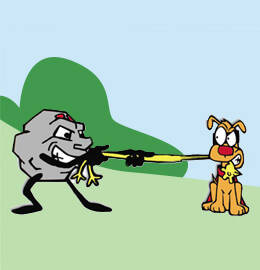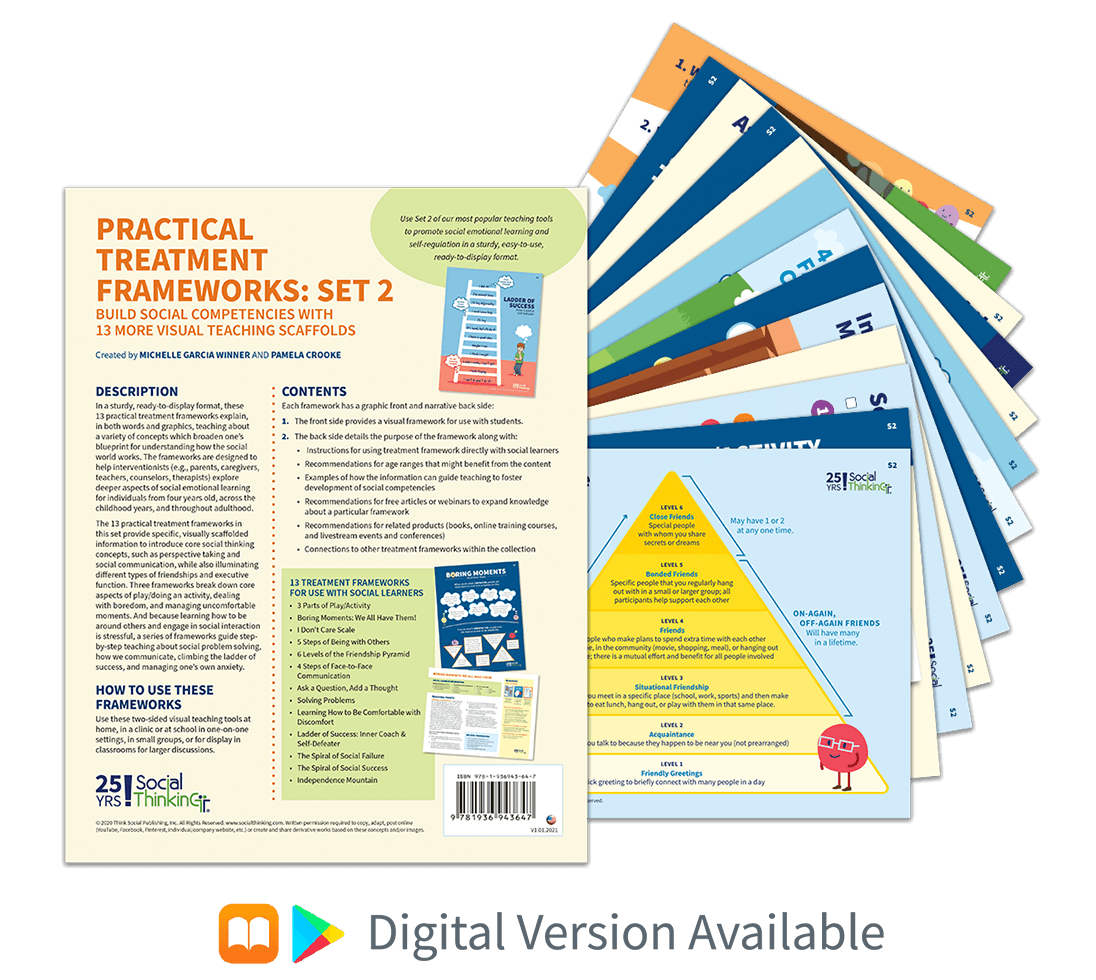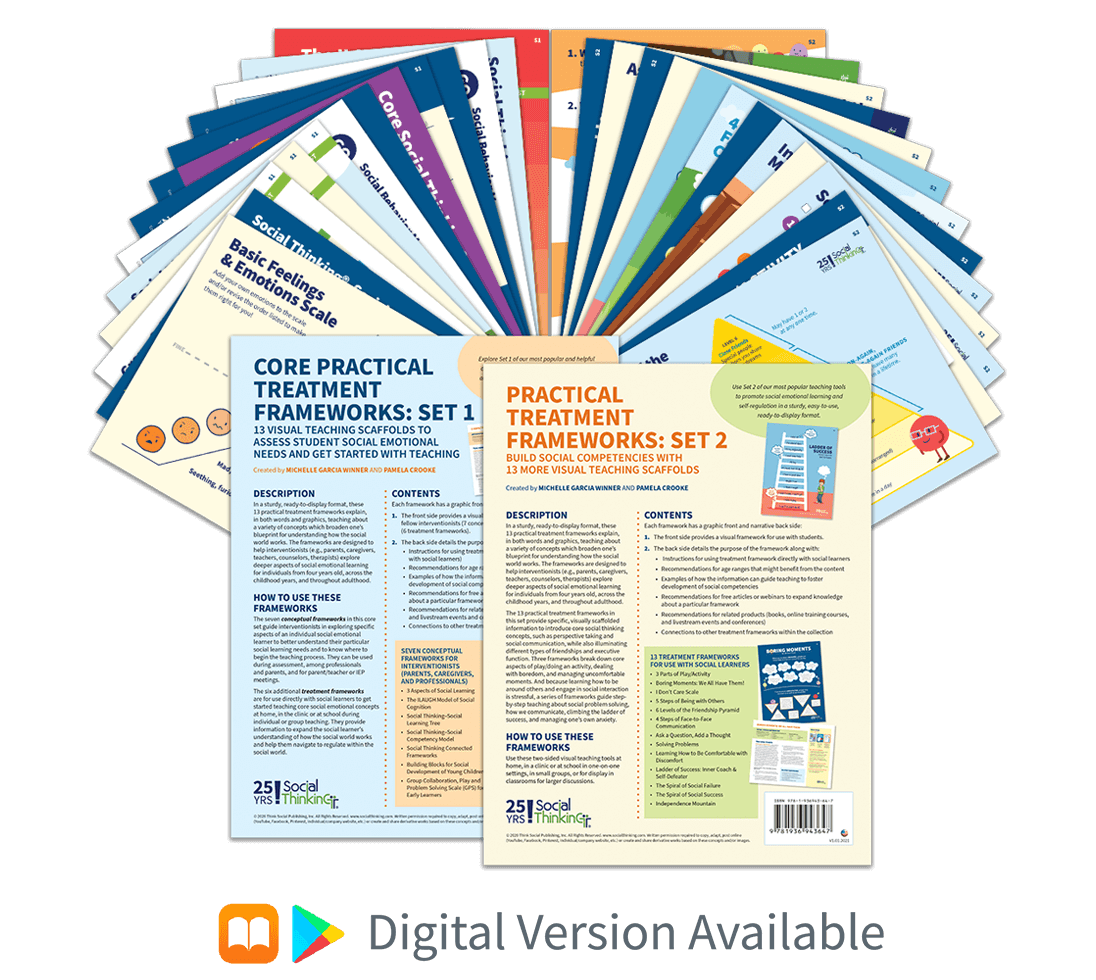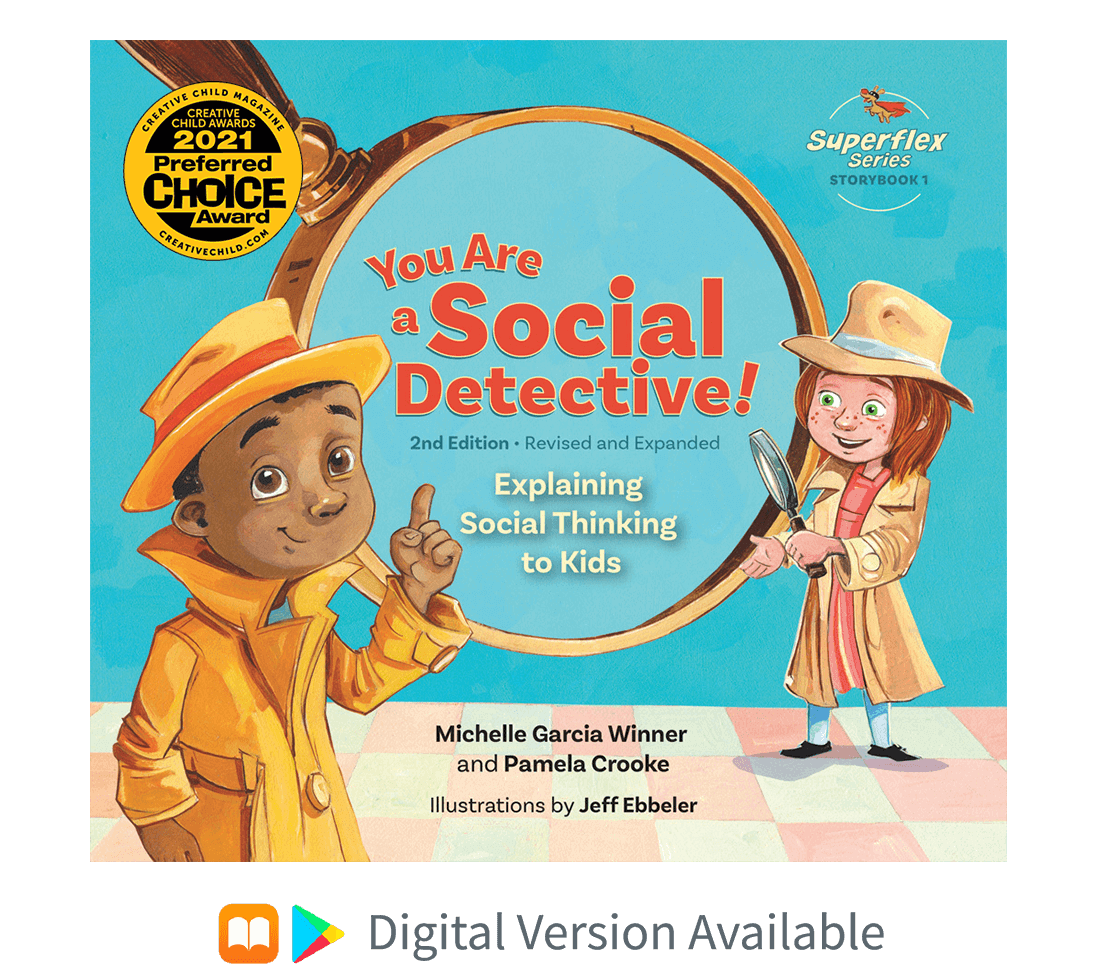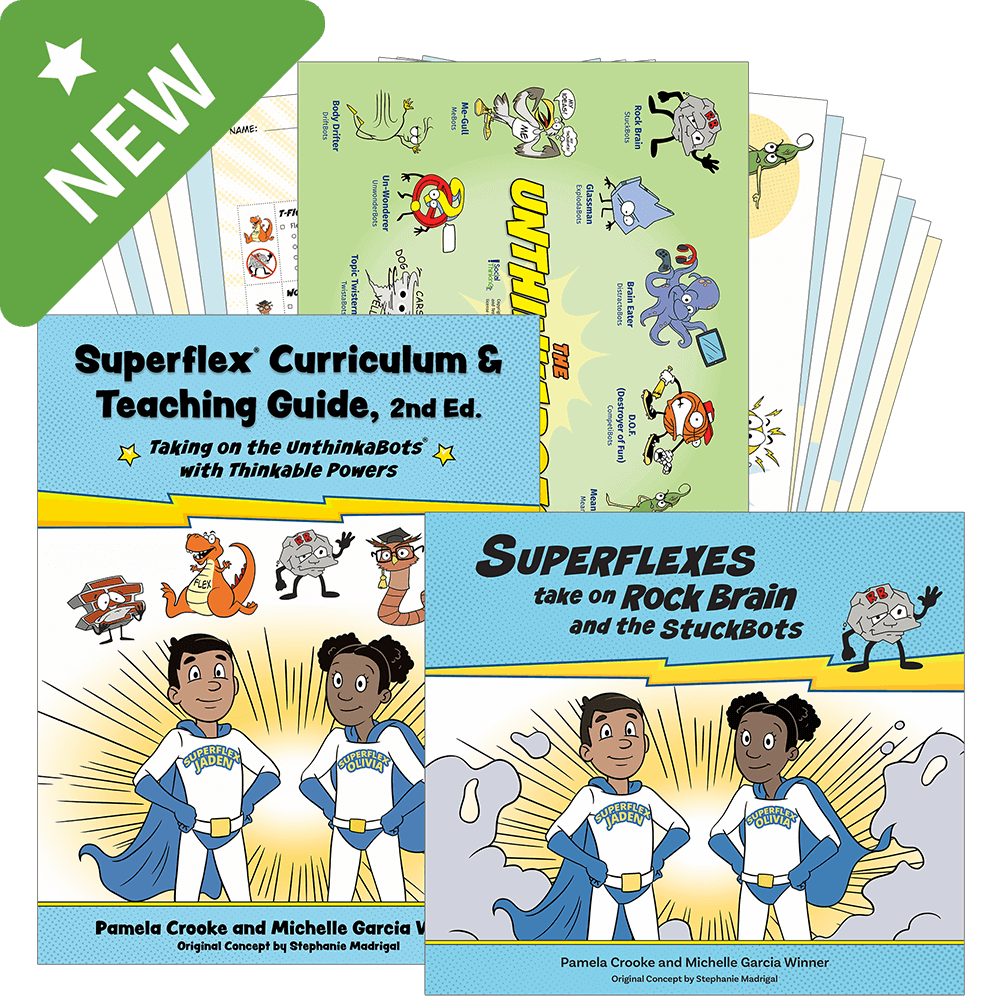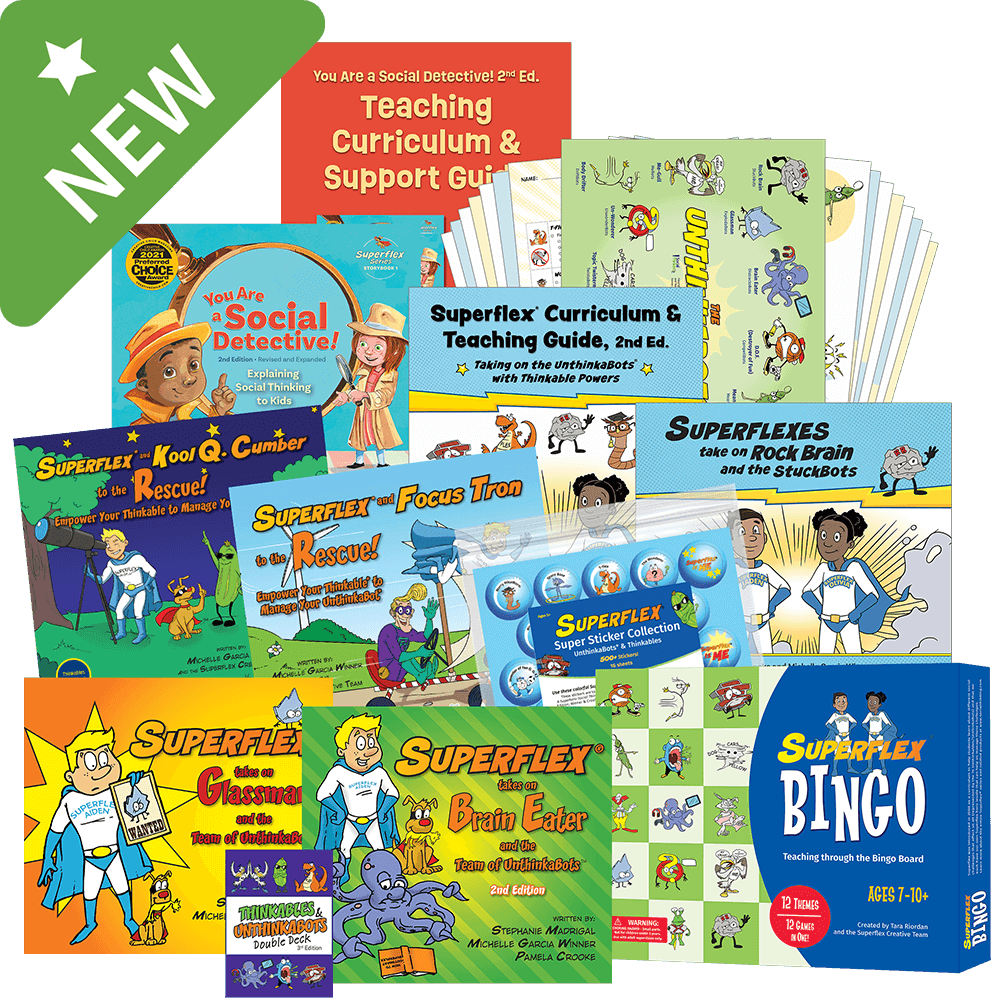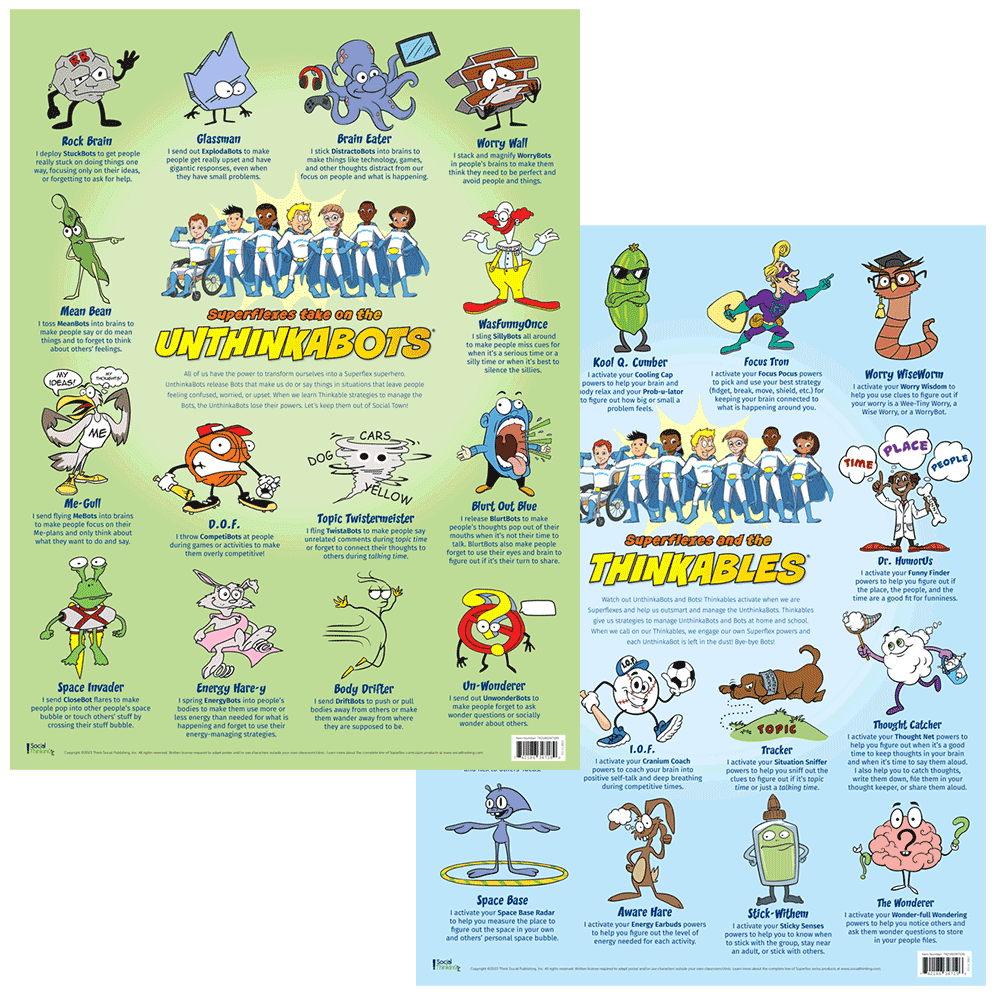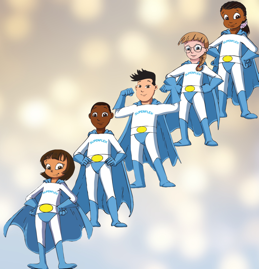Updated: April, 2022
© 2022 Think Social Publishing, Inc.
Teachers, clinicians, and parents sometimes need to work on their own self-regulation as much, or even more, than kids. Superflex and the UnthinkaBots (formally called Unthinkables) are one fun and motivating way to think about our own self-awareness and self-regulation while mindfully teaching our students as well.
Brady is an active and adventurous nine-year-old who spends the majority of his time in a general education classroom with 31 other kids, one teacher, one educational assistant, and one parent volunteer. He receives a little extra support for social skills outside the classroom once a week. In the classroom, Brady has strong interests and shows relative strengths in science and math compared to challenges in language arts. Unfortunately, this mismatch in academic abilities means that Brady is engaged, focused, and usually has good participation in science but is equally unengaged, seen as disruptive, and avoidant during most language arts lessons. Brady’s behavior during this time is usually described as distracting and frustrating for the teacher, adults in the room, and other students.
The good news is that Brady and his class just finished lessons related to storybook one in the Superflex series (You are a Social Detective!). They are just beginning to learn about their own super flexible powers using the Superflex Curriculum.
The bad news is that the teaching jumped to learning about the UnthinkaBots’ and their powers. Brady and the other kids love imagining the tricks that the UnthinkaBots play on others and the adults love seeing their excitement for learning. Brady’s teacher often talks with other teachers about which of the UnthinkaBots are in her brain and she is having fun teaching the kids and learning about herself. Kids are learning, adults are learning…. What could possibly go wrong? The following example is exactly what can go wrong when teaching using the Superflex Curriculum:
10:45 am: Teacher brings in the latest science kit
Brady: [Stands up and does what he describes as his happy dance]
Teacher: “Brady, take a seat please.”
Brady: “I can’t help it. My body is celebrating science.” [kids all laugh]
Teacher: “Please don’t be a WasFunnyOnce!”
Brady: [Leans on the table with one knee on his chair]
Teacher: “I asked you to sit in your seat. Stop being a Rock Brain.”
2:00 pm: Teacher announces language arts lesson
Brady: [Looks out the window at a group of kids in gym class]
Aide: “What are you supposed to be doing?”
Brady: [Continues to look out window]
Aide: “Brady, look around at the other kids. What should you be doing?
Looks like you turned into Brain Eater. What do you need to do right now? Please take out your notebook now!”
Brady: [Slams his hands on the desk] Yells, “I hate this!”
[Gets notebook, crumples up paper, and throws it on the floor]
Aide: “Hey Brady, You look like a Glassman right now.”
What could go wrong? The examples listed above show us what we should NEVER do. Helping kids learn to self-awareness and problem-solving to self-regulate is not about telling kids what they are doing is wrong (even if in a playful manner). From our experience, there are three common misspeaks or mistakes that interventionists stumble into when introducing or using the Superflex Curriculum. Here they are, along with some suggestions for what to do instead:
1.Using UnthinkaBot names to call out, shame or label children: Never use the names of UnthinkaBots (e.g., Rock Brain, Mean Bean (formally Jean/Gene), Worry Wall, etc.) in place of a child’s name. The UnthinkaBot names represent their imaginary creatures and pretend powers. We all have UnthinkaBots and Thinkables in our brains and teaching about them can be fun but teaching in this manner is incorrect and inappropriate. When the Superflex Curriculum is taught well, the UnthinkaBots’ powers help all of us develop stronger self-awareness of our own social goals. Kids learn to transform themselves into their own unique Superflex and develop Thinkable strategies to overcome the powers of the UnthinkaBots.
Try this instead: Be proactive rather than reactive by noticing the buildup in a child’s behavior—both negative and positive. Research tells us that we can’t help but notice negative behaviors, but what we do with that once we notice is our choice. In our attempt to keep our classrooms and groups running, we tend to address negative behaviors in a swift and corrective manner. But we can work on being more proactive by first noticing the micro-behaviors that may occur prior to a big blowout or shutdown. Kids may sigh, tense their bodies, grumble, retreat into their own thoughts, or exhibit a host of other signs that tell us they are not in a good place. These are a signal for us to be proactive in helping them access their strategies (note: we need to have previously taught them strategies before expecting kids to use them!). Focus your time on teaching strategies to become more superflexible, rather than on their negative behaviors. Also, be conscious about noticing their efforts, commenting on their attempts to participate and draw attention to the micro-behaviors that show kids are trying to access their strategies.
Example: [Brady sighs and mumbles when the teacher says it is time for science. He just started having time on the computer].
Teacher: “Oh no, I think Rock Brain is on the loose in the classroom right now. Let’s all be ready! This UnthinkaBot make us feel stuck doing what we are doing. Anybody in the group feeling stuck?”
[Three other kids on the computers raise their hands]
Aide: “Alright, let’s make sure that Rock Brain doesn’t get into our brains to make us stuck! Everybody know your Thinkable T-Flex strategy? Let me know if you need help remembering it.”
Try this too: Prime students to think about which UnthinkaBots might try to show up during a lesson. Have them use their social detective skills to make smart guesses based on past experiences and predictive logic. This sort of priming only takes a few minutes on the front end of a lesson and allows students to think about, predict, and prepare for the inevitable presence of UnthinkaBots. This short amount of time will surely be recouped if the end result is that kids are more aware of their words and actions, and eventually are able to defeat their UnthinkaBots in the moment.
Teacher says, “It’s just about time for math groups. As a class, let’s try to figure out which Unthinkables might try to get into our brains. Let’s ask, ‘What do we know about math groups and our history with UnthinkaBots? Which one is most likely to show up and why? Are we ready? Do we have our strategies ready to manage them?’”
2. Not knowing who YOUR UnthinkaBots are and when they show up! There is something really ironic about trying to teach students to be flexible and calm when we, the adults, struggle with our own UnthinkaBots.
Try this: Take the time to think about and know what awakens the UnthinkaBot powers in your brain. Model how to use your own flexible strategies to avoid negative interactions with your students. It is always worthwhile to think about what makes us go into “behavior correction mode.” For some of us, it’s when a kid blurts while we are talking, while others of us react to kids not paying attention or having a meltdown. Regardless, if you know it then you can prepare to use your own inner voice/coach to remind you when to let it go or try another route. Sometimes, we find that the adults are the ones who struggle to be flexible and leave the UnthinkaBots out of the lesson or activity.
For example: Aide thinks, “Ok, time for math groups and I’ll be working with Cole. He struggles to stay focused, and I really lost my patience with him. So today I’m going to take a couple of deep breaths and use my inner coach to stay calm to keep my own Glassman UnthinkaBot away from math with Cole.”
3. Not recognizing that kids can develop UnthinkaBot fatigue! There is a point when a child (or any of us) just get tired of hearing that we need to work on something. Focusing on UnthinkaBots without balancing Thinkable powers can be exhausting. After all, we are all human. And not all kids are motivated or interested in superheroes. Please consider this!
Try this instead: Infuse language to recognize the positive Thinkable strategies often! We developed Thinkables to help interventionists shift their observations of kids' behaviors to include the positive as well as help kids describe their own proactive strategies and powers. No matter how small the positive, recognize the student for their efforts and little steps toward understanding and self-regulation.
Note: Please take the time to understand students’ perspective, strengths, and vulnerabilities—including anxiety, trauma, learning differences, etc. Remember that your words and actions truly matter.









